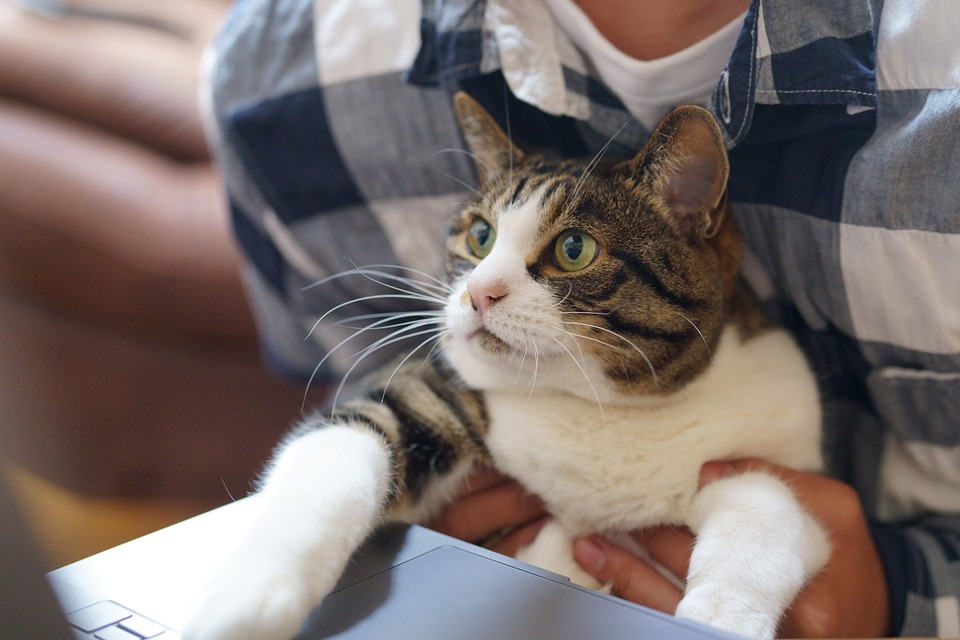Recognizing and addressing behavioral changes in our feline friends is crucial for their well-being. Cats, just like humans, can experience shifts in their behavior that may indicate underlying physical or emotional issues. By understanding these changes and knowing how to address them, we can ensure that our cats remain happy and healthy. In this article, we will explore some common behavioral changes in cats and provide helpful tips on how to address them. Additionally, we will answer some frequently asked questions related to cat behavior.
One common behavioral change in cats is increased aggression. This can be caused by fear, pain, territorial issues, or redirected aggression. Signs of increased aggression may include growling, hissing, biting, scratching, and flattened ears. To address this issue, it is important to consult a veterinarian to rule out any medical causes. Implementing environmental enrichment, positive reinforcement training, and providing safe spaces for your cat can also help alleviate aggression.
Another behavioral change to watch out for is excessive hiding. Cats may hide more often due to fear, stress, illness, pain, or environmental changes. Signs of excessive hiding may include spending more time hiding, avoiding interaction, and decreased appetite. To address this issue, create safe hiding spots for your cat, maintain a consistent routine, provide mental stimulation, and consult a veterinarian if the behavior persists.
Inappropriate elimination is another behavioral change that cat owners may face. This can be caused by urinary tract issues, stress, anxiety, or litter box problems. Signs of inappropriate elimination may include urinating or defecating outside the litter box or spraying. To address this issue, it is important to rule out any medical conditions first. Ensure a clean litter box, provide multiple boxes, offer appropriate litter choices, and address any stress factors that may be contributing to the behavior.
Excessive vocalization is another behavioral change that cat owners may encounter. This can be caused by attention-seeking behavior, stress, anxiety, or cognitive dysfunction. Signs of excessive vocalization may include frequent meowing, yowling, and howling, especially at night. To address this issue, it is important to rule out any medical conditions. Providing mental stimulation, establishing a routine, and offering interactive toys can also help reduce excessive vocalization.
Changes in appetite can also be a sign of behavioral changes in cats. This can be caused by illness, dental problems, stress, or a change in food. Signs of changes in appetite may include increased or decreased appetite, or refusing to eat. To address this issue, it is important to consult a veterinarian. Ensure a balanced diet for your cat, consider dental care, and minimize stress during mealtimes.
Now, let’s move on to some frequently asked questions about cat behavior.
Q1: Why is my cat suddenly aggressive towards me?
A: Sudden aggression in cats can be triggered by fear, pain, or redirected aggression. It is important to consult a veterinarian to rule out any underlying medical issues. Environmental enrichment, positive reinforcement, and creating safe spaces can help alleviate aggression.
Q2: How can I help my cat adjust to a new environment?
A: When introducing your cat to a new environment, provide a safe and comfortable space with familiar items. Gradually introduce new areas and stimuli, maintain a consistent routine, and offer plenty of positive reinforcement and treats to encourage exploration.
Q3: Why is my cat urinating outside the litter box?
A: Cats may urinate outside the litter box due to medical issues like urinary tract infections or stress-related problems. Ensure a clean litter box, address any litter box aversions, offer multiple boxes, and consult a veterinarian to rule out medical causes.
Q4: How can I prevent my cat from excessive scratching?
A: Provide appropriate scratching posts and pads, redirect your cat to these surfaces when they start scratching furniture, use positive reinforcement and treats, trim your cat’s nails regularly, and consider using soft nail caps.
Q5: Why is my cat meowing excessively at night?
A: Excessive nighttime meowing can be due to attention-seeking behavior, anxiety, or cognitive dysfunction. Establish a routine, provide mental stimulation during the day, offer interactive toys, and consult a veterinarian to rule out any underlying medical conditions.
In conclusion, understanding and addressing behavioral changes in cats is essential for their overall well-being. By recognizing the signs and taking appropriate steps, we can help our feline friends lead happy and healthy lives. If you are concerned about any behavioral changes, always consult a veterinarian for professional advice tailored to your cat’s specific needs.








